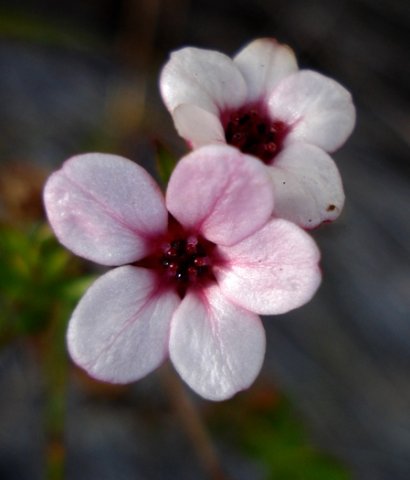Adenandra

Author: Ivan Lätti
Photographer: Judd Kirkel Welwitch
Adenandra is a genus of ericoid shrubs, rarely subshrubs in the Rutaceae or citrus and buchu family. The plants are sometimes called buchu, a name shared with other Rutaceae genera like Acmadenia, Agathosma, Diosma and Empleurum. Some Adenandra species are single-stemmed reseeders, the others multistemmed resprouters.
The simple and small leaves are mostly alternate. The leaf-shape is elliptic, lanceolate or needle-like with entire, sometimes fringed margins or margins with narrow protrusions. There are often two glands at the base of leaf petioles, and the leaves also contain oil glands that release a strong, often citrus-like aroma when crushed.
The sometimes sticky flowers grow at stem-tips, solitary or in umbel-like racemes, or flat-topped clusters. The calyces have five parts. The five petals are stalkless or have short, hairless claws. The petals are glistening white or rarely pink above and pink to red below.
There are five stamens, shorter than the calyx, inserted on the outer margin of the disc. The anthers have stalked, spoon-shaped, rarely globose glands at their tips. The generic name, Adenandra, is derived from the Greek words aden meaning gland and andros meaning man, referring to the glands on the stamens. There are also five hairy, thread-like staminodes alternating with the stamens and ending in glands.
The ovary is five-lobed with five locules and two ovules per locule. Around the ovary is a cup-shaped disc that has five or ten lobes from which the slender, cylindrical filaments emerge. The simple style is shorter than the petals and usually cylindrical, its stigma disc-shaped and five-lobed. The fruit breaks into separate spherical, berry-like units that may be horned or studded with glands.
There are 18 Adenandra species, all occurring in the winter rainfall, Western Cape fynbos. The plant in picture is Adenandra marginata subsp. marginata (Leistner, (Ed.), 2000; Manning, 2007; Bean and Johns, 2005).

